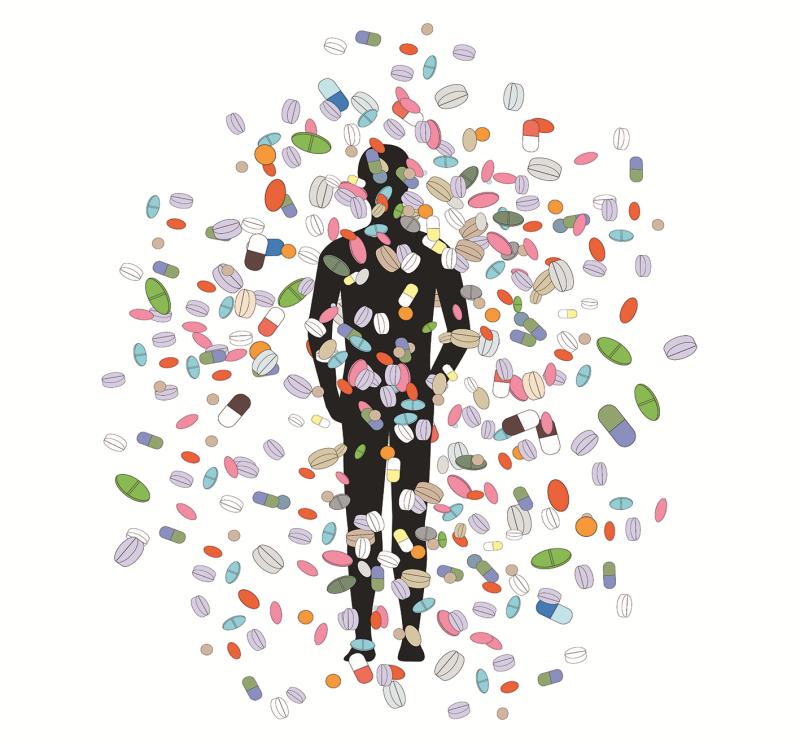
A smart electronic device that monitors multiple medication intake boasts good accuracy for recording, retaining and delivering adherence data, in addition to ease of use and excellent acceptability by elderly patients, as shown in a study.
Dubbed as Time4Med, the device is a small, electronic card affixed on medication packaging. It features a small button that records date and time of medication intake when pushed. The device connects on a tablet computer using a dedicated application, and stored data can be displayed as scatter diagram within the app or can be downloaded from the tablet in csv format.
“The small cards can be recommended for practitioners who desire to elucidate adherence behaviours of ambulatory patients and also with polypharmacy, and in clinical trials,” researchers said.
In the validation study, the researchers tested the Time4Med in terms of its technical performance (ie, reliability) and the patient perspective (ie, usability, satisfaction and acceptability) in 20 healthy volunteers and 11 elderly outpatients (mean age, 80.2 years) with polypharmacy, respectively. Volunteers used the device with a virtual thrice-daily intake over 2 weeks, while the elderly patients who were taking three medications daily used the device over 4 weeks.
A total of 847 events were logged by the volunteers in field conditions that mimic daily use. Device functionality (percentage of readable devices after a period of use) was 100 percent. Reliability was also high, with rates of at least 95 percent for all criteria: sensitivity (proportion of events stored and indexed; true positive rate) was 94.9 percent, specificity (proportion of events not stored and not recorded; true negative rate) was 99.4 percent, and recovery (percentage of identical events read out before and after a stress condition, ie, dropping) was 100 percent. [Pharmacy 2019;doi:10.3390/pharmacy7040155]
“Dropping the smart card and storing it in a refrigerator caused either the recording of false events or no recording at all,” the researchers said.
Under real-life conditions, the device was well accepted by elderly patients with a mean System Usability Scale score of 82.6. The five qualifiers of acceptability—the smart card is easy to use, the button is easy to find, pushing the button is easy, the alarm is well audible, and size of the card is adequate—were rated (from 1=fully disagree to 4=fully agree) equally satisfactorily by the patients (mean, 3.6) and volunteers (mean, 3.3).
Pushing the button was the most criticized qualifier (volunteers: mean, 2.3; patients: mean, 3.3). Participants disapproved of the length of time needed to push the button (3 seconds), as well as the lack of resistance or click tone to confirm the pushing, noting a glaring delay between pushing the button and the generation of the beep sound.
Furthermore, the volunteers commented that pushing the button required both pressure and dexterity, which might be challenging for elderly adults.
Despite such misgivings, “acceptability and satisfaction were very high for all participants. These results are similar to other electronic monitors of commercially available blisters or pressurized metered-dose inhalers,” the investigators noted. [Sensors 2010;10:1535-1552; J Asthma 2012;49:657-662]
“Monitoring ones’ intakes was not a concern for the patients, and this degree of supervision was admitted. The graphical representation of the daily [medication] intakes on the tablet computer was well accepted. This is consistent with other articles where graphs of electronic monitoring were a means of motivation,” they added. [AIDS Behav 2010;14:1340-1346]
There were several limitations to the study. The investigators acknowledged that they could not dismiss the possibility that people would stop practicing the behaviour of pressing the button in the long run as they only performed monitoring over 1 month. Additionally, the Time4Med device can neither tell which medication a patient took, if prescribed several, nor detect whether a patient took one or several medications. “This is inherent in every electronic system that monitors intake indirectly.
“Further research is now needed to help practitioners interpret the recorded data and ultimately support clinical decision making,” they said.